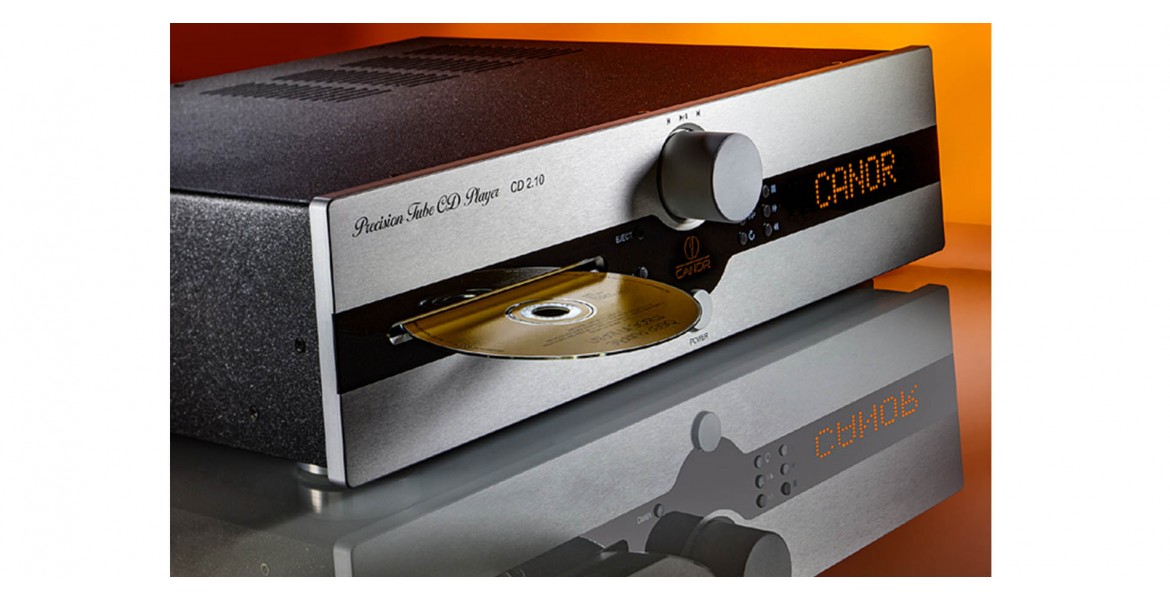
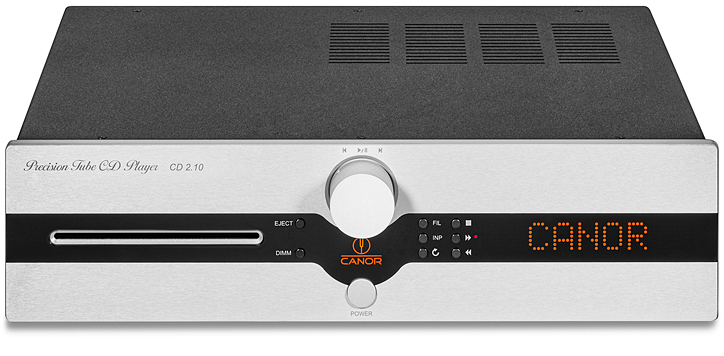
It seems obvious, the Canor brandfrom Slovakia to put in this drawer of small series manufacturers. But with that you are going wrong. Canor is not an active craft business that produces individually on customer request. But on the contrary. The company turns out to be a company of considerable size. Eighty employees work for Canor in the town of Prešov. These astonishing dimensions are easy to explain: The company, which has been active for over 25 years, has been active as an OEM producer for global audio companies that commission the manufacturer Canor to manufacture their devices.
This also results in the impressive vertical range of manufacture with our own housing construction, automated circuit board assembly and a special EMC measuring room. In this highly professional environment, there are excellent conditions for developing and producing your own electronics line at the same time. Canor's portfolio currently comprises six components that have a lot in common: the striking visual appearance, high tonal ambitions and - as a result - a preference for tubes.
This closes the circle to the small Eastern European manufacturers described above and their weakness for the sound magic of glowing pistons. Canor uses this very analogue technology throughout: in phono preamps, integrated amplifiers and even with a CD player like the test person playing here.
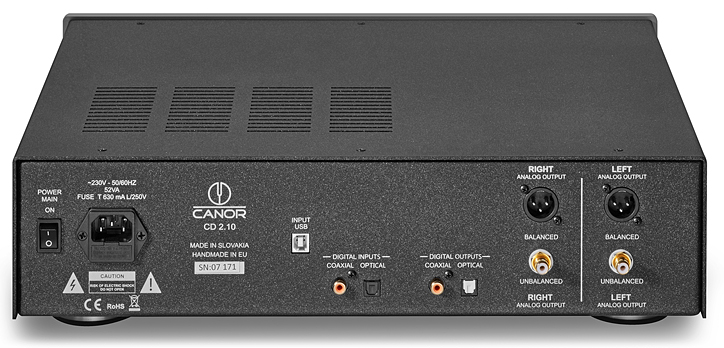
This target-oriented meticulousness is also demonstrated by encased damping elements that protect the glass bulbs from microphonic effects. Canor also pays special attention to the passive output filters. These were designed with a high slope and, according to the manufacturer, are "super symmetrical". Whereby the question must be allowed, how much more symmetrical than symmetrical is possible at all? So the end of the signal path looks very promising, but the beginning is also impressive: There is an equally robust and quiet slot-in drive there. It is designed exclusively for processing CDs.
DVDs or storage disks with MP3 or WAV files, for example, are ignored. Read data from a compact disc are transferred internally to the high-class digital / analog converter chip, whose capabilities far exceed the 16-bit requirements of CDs. The AK4490 from AKM used here works on a 32-bit level.
Exceptional quality
In view of this performance, it made sense to make the qualitative potential of the D / A converter in connection with the elaborately designed analog output stage accessible to external digital sources.The Canor CD 2.10 offers a total of three interfaces for this: Optical, Coaxial, USB. Data up to 768 kilohertz and DSD 256 are processed via the universal serial bus, while the two S / PDIF accesses have to be limited to 24 bit / 192 kilohertz due to the system. Regardless of this limitation, which is negligible in everyday life, the coaxial input was given special attention by the developers, because it was given a high-frequency transformer of extraordinary quality. The consistently first-class level of quality is also reflected in the clean structure of the device,
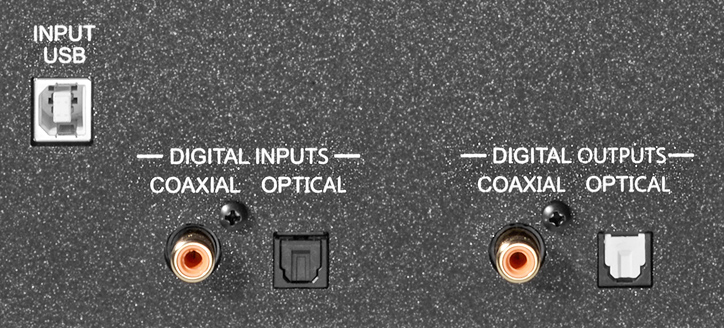
Especially this display, implemented with a pixel-dot-matrix, literally causes a sensation, because thanks to the huge font size, the words can be deciphered very well even from a great distance. If you don't like a yellow-orange with a strong character, you can also dim or switch the display off. I, however, found the sunny shade to be very pleasant. The large black controller in the center of the CD player controls the drive of the most important commands (start, pause, skip).
During operation, make sure that the CD player allows itself some time to be ready to play - the tubes require a short warm-up phase. A small red LED signals this »warm-up« process. After the first contact, I couldn't bring myself to operate this promising device with the standard power cord from the box. Isotek's excellent Evo3 Premier was much closer to the expected level of the player. The fully symmetrical Canor CD 2.10 was connected via XLR cable (Pangea Audio) to the equally symmetrical M6 PRE stage from Musical Fidelity. That promised excellent listening pleasure - and I was not disappointed.
Profitable, expansive
I didn't make it easy for CD 2.10. A combination of a lovely female voice and sparing instrumentation usually plays a role in tube-based electronics. But instead I fed the Canor player with techno. However, in the high culture variant. On "Versus" by Carl Craig, highlights of his oeuvre were re-recorded with a full orchestra. This production challenges the CD player in many ways. So it was necessary to convey the hard, wiry note of Francesco Tristano's playing on the grand piano and the hissing, drawn character of the hi-hats, far from any typical tube "mildness" that could be expected - what the Canor player succeeded without hesitation. He also reproduced the rapidly chugging sequencer lines, jumping and lively without any smearing delay.
The Canor CD 2.10 even shouldered the sub-bass amplified by timpani from the DJ mixer in the title »Darkness« just as steadfastly as the mighty brass fanfares on »Sandstorms«. On the other hand, the fact that he was able to bring the string arrangements to the fore in a profitable and expansive manner with a large gesture was less surprising - this aspect is an easier exercise for a good construction with tubes in the output stage.
The title "Something About John Coltrane" by Alice Coltrane from the album "Journey In Satchidananda", with a very different stylistic weighting, was particularly evident in the ability of the CD player to present music as if from a single source. This masterpiece of “spiritual jazz” can - especially with unbalanced setups - demand a lot from the listener, but the Canor CD 2.10 makes the listening experience consistently harmonious. Especially since he succeeds in gently taming the timbres of Tulsi's long-necked lute Tanpura and Pharoah Saunders' soprano saxophone, which tend to be demanding for Western ears - without depriving them of their special magic!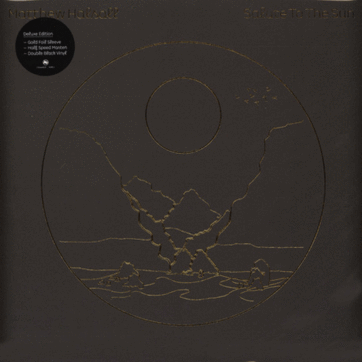
Matthew Halsall is one of the shining lights in contemporary British jazz. The current album “Salute To The Sun” cultivates its interpretation of a “spiritual jazz” and delights with its usual rich musicality and excellent recording quality.
The works of Alice Coltrane had a decisive influence on the musical socialization and creative work of the English jazz musician Matthew Halsall. His latest opus "Salute To The Sun" is not available on CD, but is in the repertoire of the streaming provider Qobuz.Here the Canor player can demonstrate flexibility and take up his »second job« as a D / A converter. The files are delivered by a Roon Rock server, optimized via a Mutec MC3 + USB interface and then end up at Canor's preferred coaxial port on the CD 2.10.As expected, the Slovak multi-talent also enchants with the streamed data with his pronounced musicality.
Focus of performance
This extends down to the smallest level, for example in the very complex percussion arrangements with the metallic sound of the kalimba as the culmination. The CD 2.10 also hits the typical trumpet tone of the band leader in its mixture of mild sharpness and longing sentiment sensitively and flawlessly.
In addition, the magical harp pearls »on top« in the broad stereo panorama.Regardless of the sharpness of detail achieved here, the overall musical effect remains the focus of the Canor's performance. He presents music first and foremost as a joyful, holistic experience, which is essential when enjoying an album with spiritually tinged jazz. But actually applies to any kind of good music.
laboratory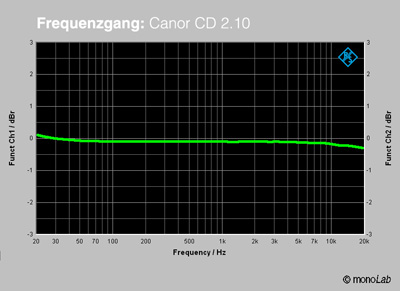
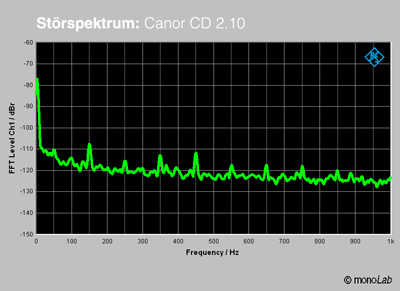
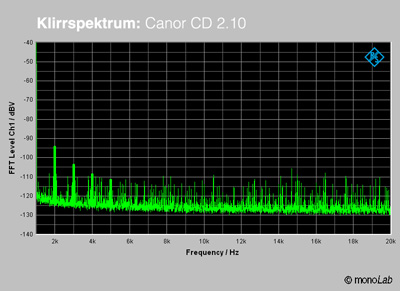
Distortion:
Distortion factor (THD + N): 0.0021%
IM distortion (SMPTE): 0.018%
IM distortion (CCIF): 0.0004% Signal
-to-noise ratio: External
voltage (20 kHz): -82 , 6 dBr
noise voltage (A-weighted): -90.4 dBr converter
linearity:
-50 dB: 0.015 dB
-60 dB: 0.0134 dB
-70 dB: 0.009 dB
-80 dB: 0.060 dB
-90 dB: 0.22 dB
Other:
Output voltage: 1.98 V
Channel difference: 0.007 dB
Output resistance: 148 Ω
Power consumption:
Stand-by: 1.0 W
Idle: 32 W.

The Canor CD 2.10 is an excellent CD player - and at the same time a great D / A converter. Both sections of the characterful device from Slovakia benefit equally from the tube-equipped, symmetrically constructed analog output stage, which contributes significantly to the detailed, exceptionally pleasant, always coherent sound.
With the seriously constructed Canor CD 2.10 you can buy your “final” CD player and also get a versatile digital / analog converter for external sources to play the current high-resolution digital formats in the best sound quality. Ultimately, we find two top devices here under one roof. What makes the price / performance ratio of the Canor CD 2.10 appear in a particularly bright light. André Schwerdt
https://www.chameleonracks.gr/Canor%20Audio%20/Canor-Audio-CD-2-10--DA-converter--en

